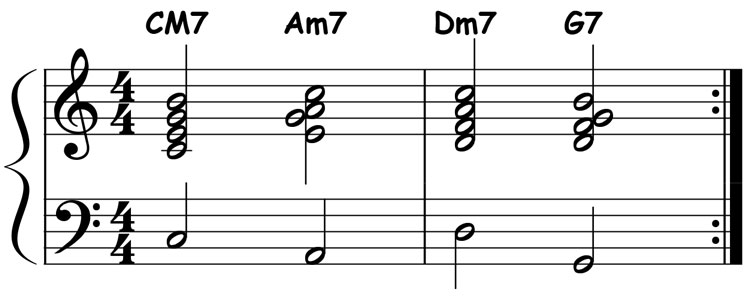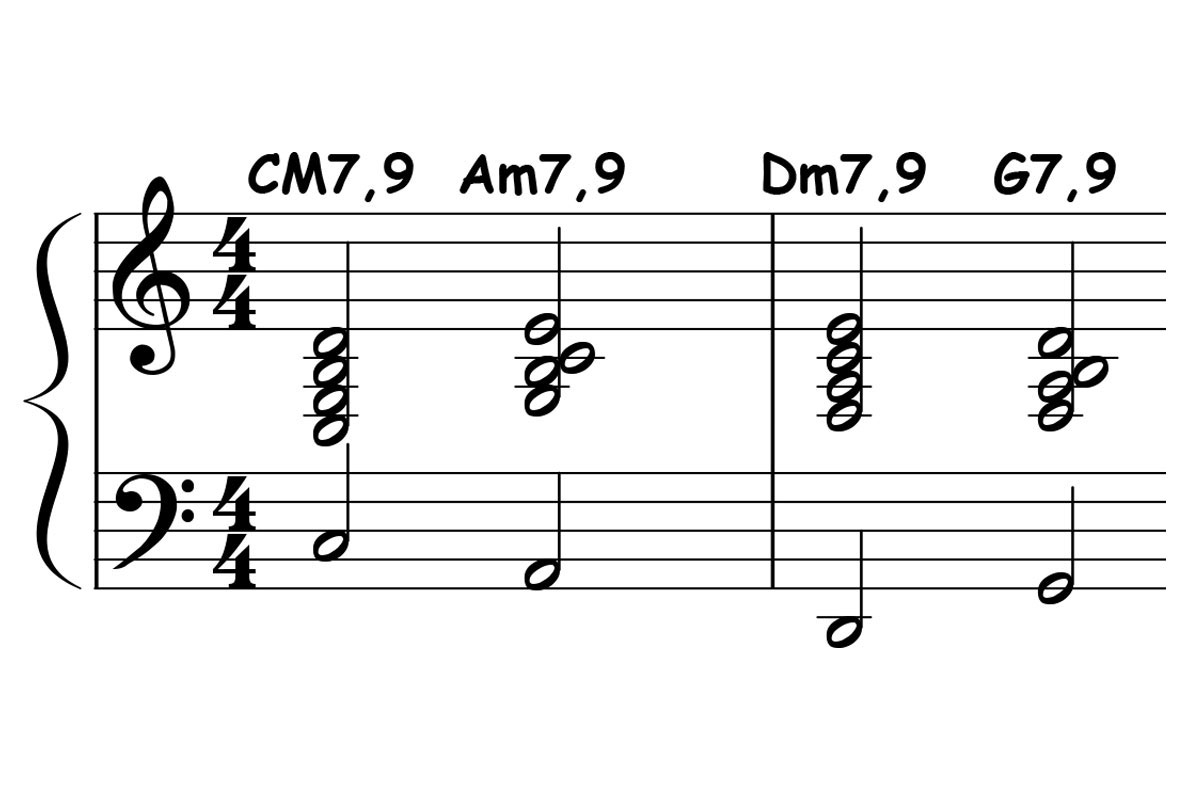An exploration of the harmonic and rhythmic elements that “jazzify” the Major 1-6-2-5 turnaround chord progression…
Basic 7th Chords without Voice Leading
Our starting point, the least jazzy version…

Basic 7th Chords with Voice Leading
Notice how smoothly the harmony flows…

Roots Removed & 9ths Added to each Chord
It’s almost always a good call to drop duplicate notes (in this case “the 1” of each chord and replace it with a color tone (in this case “the 9” of each chord). Notice also that we lowered the right hand into a fuller, more pleasing register…

Drop “the 5”, add 13 in the G7 chord…
Notice how adding just a wee bit of color to the V7 chord increases the jazziness of this progression…

Walking Bass using Diatonic Approach Notes
A walking bass in relentless quarter notes is a great way to outline the harmony and keep the time flowing…

Play Right Hand Chords after the Beat
Your skill at playing chords off the beat (in this case behind the beat) will take your comping to the genius level! (Don’t forget to swing the eighth notes and rests)…

Play Right Hand Chords before the Beat
Believe it or not, you can actually play each chord ahead of the beat! Doing so will take your comping to the super genius level! (As always, don’t forget to swing the eighth notes and rests)…

Play a Mixture of Chord Placements
Sometimes on the beat, sometimes after the beat, and sometimes before the beat…

Change Am7 to A7
A common practice in such turnaround chord progressions is to replace the Am7 chord with an A7 chord (in this case a colorful A7b9). Doing so adds some nice chromaticism and a stronger harmonic drive since the A7 is the secondary dominant (V7/ii) of Dm7…

Walking Bass using Chromatic Approach Notes
Chromatic approach notes will take your walking bass lines to the next level by creating a strong sense of voice leading, harmonic drive, and sense of anticipation. Pretend you are the bass player and play the bass line melodically…

Homework
- Play along with all the above until you get the feel.
- Play each pattern above by yourself with a rhythm track. Record yourself, listen to the playback, and ask yourself if that is what you wanted to play.
- Mix and mix some of the ideas above and study-practice them in all keys you would like to play in.
- Experiment with different color tones for the V7 chord (Poke around “Jazz School” for tons of ideas for super cool V& chord voicings)
learn more… Jazz School

Leave a Reply